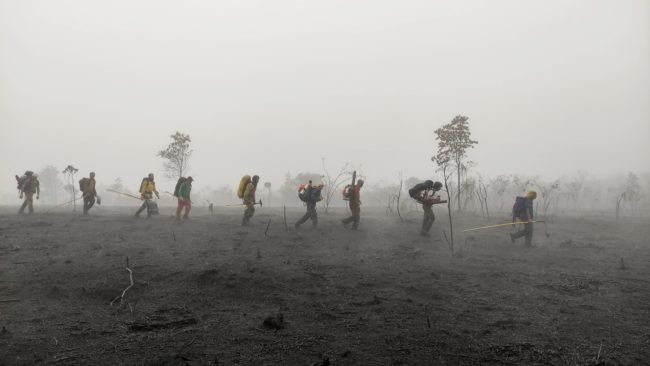 10.11.2021
10.11.2021
Strengthening networks against fires
By Attilio Zolin – Casa Socio-Environmental Fund
In early October, it started to rain again in large areas of Brazil, bringing relief after the drought that has hit several regions in the country. According to the National Waters Agency Drought Monitor, serious, extreme and exceptional drought has especially affected the Central–West Region, but there were drought areas in almost the whole country. With the extreme dry weather comes the fire that easily spreads, burning accumulated organic matter helped by strong winds that fan the flames. It is yet too soon to calculate the burnt area in 2021, but we know the figure will be closer to last year’s. This means that some million hectares of forest were turned into ashes. Illegal deforestation, together with perceptible climate change, has worsened the situation year after year.
No forest fire starts big. There is always a first spark by spontaneous ignition, accident or even criminal action. To fight the flames while the fire is still small may avoid an uncontrolled fire. That is why the role of community and volunteer fire brigades is so important, as in most cases they are the ones to arrive first at the battle front. The work of the Fire Department and the National Center for Preventing and Combating Forest Fires (PREVFOGO) is extremely important, but Brazil’s continental dimensions prevent public agents from timely reaching all fires. To make things worse, during the fire season, several outbreaks emerge at the same time. Extreme drought, logistical obstacles, and criminal fires make even more difficult the work of state agents. If local communities are trained and equipped to combat forest fires at their beginning, the odds of success increase quite a lot.
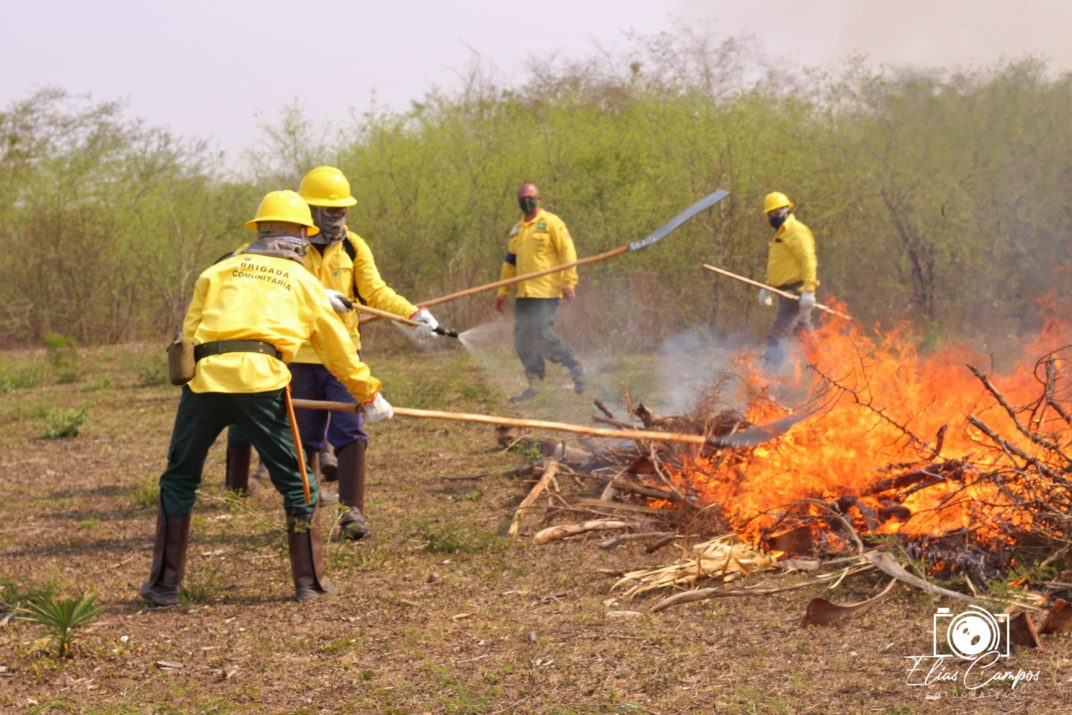
TRAINING COURSE FOR THE PANTANAL COMMUNITY FIRE BRIGADE. PHOTO: ELIAS CAMPOS.
For this reason, the Casa Fund launched in 2021 the Call for Projects to Support Grassroots Groups Fighting Climate Emergencies Provoked by Forest Fires. The objective of this call for projects was to support brigades and community and traditional associations so they could structure and strengthen fire brigades, integrated fire management, as well as mobilizations, engagements, and denunciations. The call was opened in April 2021 and 52 projects of up to R$ 30,000 each were selected. These projects are in the Amazonia, Cerrado and Pantanal, the biomes most affected by forest fires in the last years. These grants were only possible because of coordination between the Casa Fund and its funding partners: Wellspring Philanthropic Fund, WWF-Brazil, Amazon Watch, Global Giving, and Cotyledon Fund.
According to Osvaldo Barassi Gajardo, a WWF-Brazil conservation specialist and leader of the emergency fund, “these actions are seen by many organizations as a super viable strategy to improve response to forest fires, as community and volunteer brigades, in many cases, are the first to react to fires; and the more brigades we have on the ground, the easier is to act before it turns into a large fire. The trend is for the number of community and volunteer fire brigades to increase in coming years.” It is hard to know how many volunteer fire brigades we have currently in Brazil, but it is estimated that over 200 brigades of this type are operating in all Brazilian biomes.
Don’t play with fire
Combating forest fires is serious business. It is necessary adequate training and specific protective gear to withstand high temperatures. Other equipment such as swatters, blowers, water pumps, drones, among others, is also required. This equipment is not inexpensive and that is why supporting the brigades is so important. Henrique Gironha, volunteer in the Lençóis Environmental Rescue Brigade (BRAL) recounted how firefighting was done over 20 years ago, when the institution was founded. According to Henrique, “the first fire we combated was in the 1990s. I had no equipment and wore flip-flops, and carried a plastic bottle with two liters of water. We used a machete to cut small bushes and used them as fire dampers.” Today, this would never be allowed. BRAL has grown, became a point of reference in Chapada Diamantina and adheres to all safety protocols.
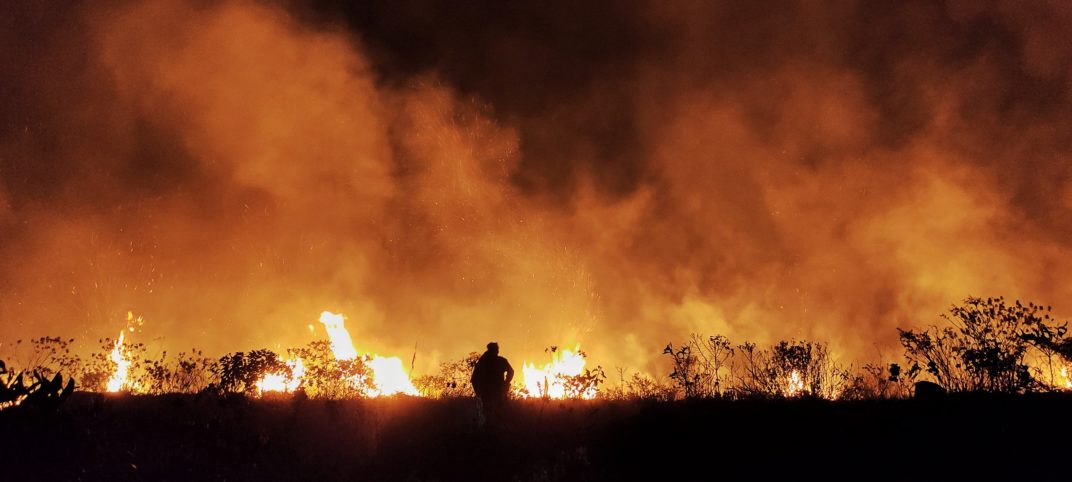
FIGHTING FIRE IN THE CHAPADA DIAMANTINA REGION. PHOTO: AÇONY SANTOS.
The Diamantina region was one of last to get rain, but in mid-October the rainfall was heavy, extinguishing the last fire outbreaks that still remained. According to André Valladão, BRAL vice-president, the work continues: “although the rains extinguished the fire, we are always on the alert, we have ongoing monitoring.” With the Casa Fund grant, BRAL was able to acquire one drone, two powerful blowers (stronger than the ones we had), in addition to basic protective gear for volunteer firefighters, such as special boots resistant to high temperatures.
The use of drones for fire monitoring has been consolidated as an important tool, and several projects supported by the Casa Fund have used the grant to purchase this equipment. In André’s words: “today the drone is indispensable to all fire brigades both in monitoring, when there is no fire yet, and when fighting the fire to locate water sources or to identify the fire head, flanks and rear. It is a very important tool that helps a lot the work of the brigades.”
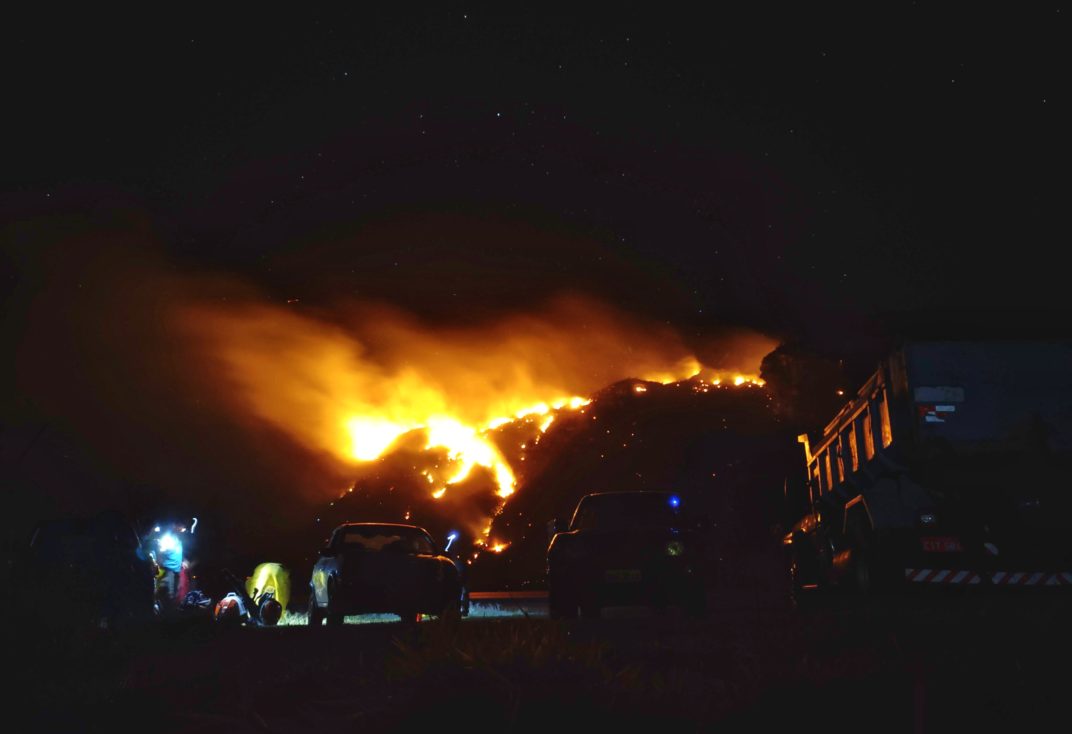
VOLUNTEERS FROM THE LENÇÓIS ENVIRONMENTAL RESCUE BRIGADE GETTING READY TO FIGHT FIRE IN CHAPADA DIAMANTINA. PHOTO: AÇONY SANTOS.
Açony Santos has been a photographer and BRAL brigade member since 2013. In his days of firefighting, he took the incredible and frightening pictures that also illustrate this article. According to Açoni, “there are simple things that are quite important for brigade members, such as the flashlights that we managed to buy now. They are our eyes when we are fighting the fires at night. The Chapada Diamantina brigades are well known for fighting fires during the night, when we do have better odds to extinguish the fire. During the day is too hot with the intense fire and this makes it more difficult. At night, temperatures go down. Quite often brigades could not fight the fire because they had no flashlights. In fact, these flashlights made all the difference.”
Brigade members say the backpack blower is today the most efficient tool for directly combating fires. A single person operating a blower does the job equivalent to three or four people with common swatters. Several supported fire brigades used their grants to purchase potent last-generation blowers. For Açoni, “the last ones we bought are more potent, they are a bit heavier, but their power makes all the difference in firefighting.”
Climate Change
The last years have been marked by large fires. These extreme events stimulated the creation of new volunteer brigades, as the Cavalcante Environmental Volunteer Brigade (BRIVAC), in Goiás state, which is active in the Chapada dos Veadeiros region. According to volunteer brigade member Carolina Ângela Rodrigues, “the large fire in the National Park of Chapada dos Veadeiros in 2017 was an opportunity to organize, equip, and structure the work of these volunteers, and BRIVAC grew and became a model of volunteer fire brigade.” BRIVAC received support from the Casa Fund and managed to acquire personal protective equipment (PPEs) and also a drone. The grant received in April 2021 helped the brigade to get equipment just at the beginning of the dry season and this also put it in a better position for the next season.

IN 2021, BRIVAC VOLUNTEERS RELIVED THE EXPERIENCE OF FIGHTING A LARGE FIRE, CLASSIFIED AS LEVEL 3 BECAUSE OF ITS HIGH INTENSITY AND THE HUGE AREA AFFECTED. PHOTO: FILIPE MENDES.
For Diego Serrano, BRAL volunteer member for over ten years, the increase in drought intensity in the last years is clear, thus seriously aggravating forest fires. According to him, “there has been a significant change in the rainfall pattern in the last few years, and we see this because we are on the frontlines of climate change.” This perception is also shared by brigade members from other regions, as in Pantanal and the Amazon, biomes known by their abundant waters, are now hit by severe droughts and witness their rich flora and fauna burning every year.
Since 2019, the situation in Pantanal has been aggravated, when a great drought has begun and continues to this day, without any signs of stopping. Fires have increased both in intensity and frequency. The 2020 drought brought about desolate scenarios, according to accounts by women from the Baía Negra Environmental Protection Area Women Producers’ Association. Around 70% of this environmental protection area was turned into ashes. At the time, the local fire brigade had still little experience and did not have adequate equipment. Despite the great taskforce organized by IBAMA, the Navy, Fire Department, and the Municipal Government, it was impossible to contain the fire that burned boats of riverside dwellers who live off fishing and nearly destroyed the homes of communities in the region.
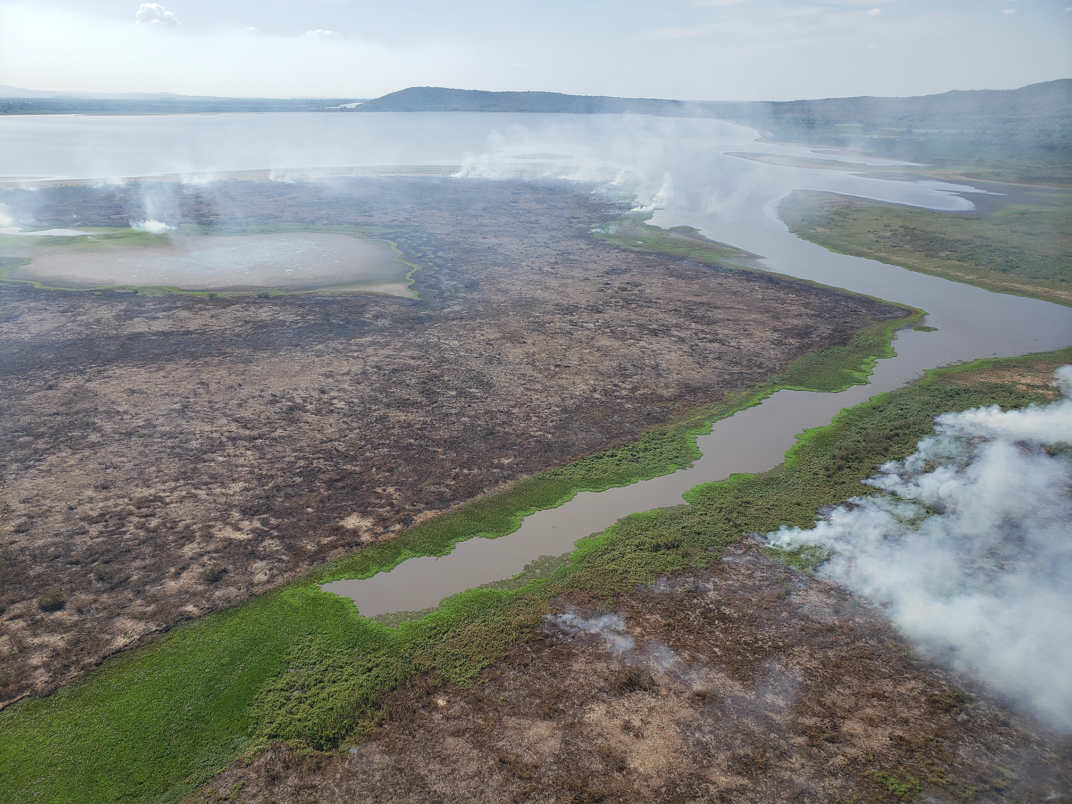
DRONE IMAGE SHOWS RAVAGED AREA IN PANTANAL, BAÍA NEGRA ENVIRONMENTAL PROTECTION AREA (2017). PHOTO: THAINAN BORNATO.
After the scary scenario of 2020, local communities began networking and seeking partners to strengthen community fire brigades. The Baía Negra Environmental Protection Area Women Producers’ Association was one of the organizations selected for a Casa Fund grant in 2021. Today the brigade is better equipped, prepared, and with a larger number of volunteers. Now the work is focused on preventing, preparing the aceiros (firebreaks or strips of cleared land wide enough to stop fires), and also environmental sensitizing and educating with residents in the region. This is working out and so far there were no fires in the Baía Negra Environmental Protection Area this year, although the fire was close by and the brigade was put on the alert.
Climate change has also generated impacts in the Amazon. Célio Ramos, of the Association of Banana Rural Producers of Entre Rios Sul (APRUBERS), in Entre Rios, Roraima, tells us that “it used to rain a lot in this region some years ago, today we feel the difference.” There was a change in the pattern of intense rainfall in December and January, known in the region as boiacú rains – they are not what they used to be. That is why the period between December and March has become a critical period for fires in this region of Brazil’s northern hemisphere. In 2015, a large fire in the region of Entre Rios burned crops, animals, native forest, and almost reached residents’ homes. With the Casa Fund grant and support from the Fire Department, APRUBERS managed to train a group of young people. Although they are still being trained, the community already feels better prepared for the next fire season. “If back then we had the knowledge we have now acquired from the Fire Department, with the Casa Fund support, we would not have lost so much,” said Célio.
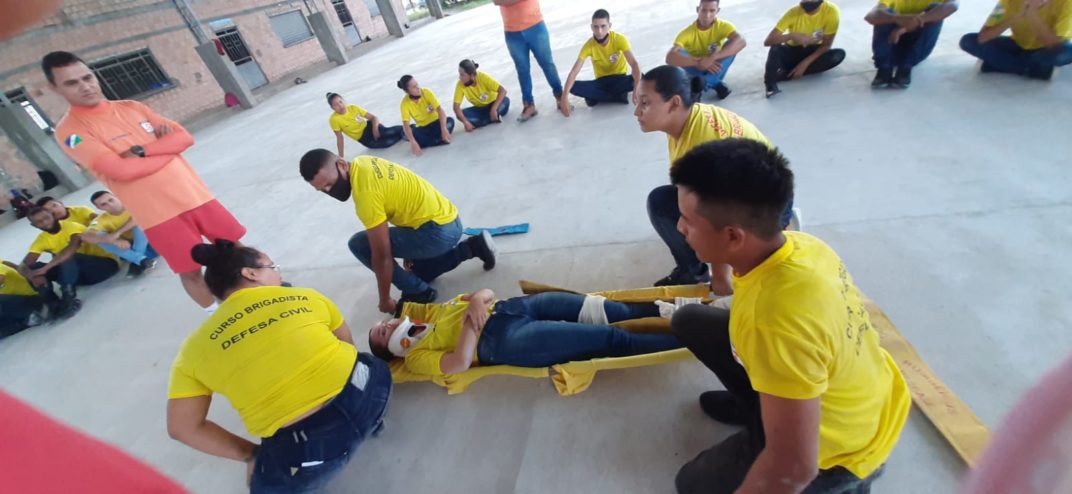
YOUTHS OF ENTRE RIOS, RORAIMA, ARE TRAINED BY THE FIRE DEPARTMENT. PHOTO: APRUBERS.
Indigenous brigades
According to the MapBiomes, Brazil’s Indigenous lands are the ones that best preserve the forests, having less than 2% of their areas deforested in the last 35 years. Indigenous peoples are the true guardians of forests and live in harmony with nature. However, in the last few years not even the Indigenous territories have escaped large forest fires, and the Xingu Indigenous Territory was also affected. According to Takumã Kuikuro, president of the Upper Xingu Family Institute (IFAX), “it was very sad to see the forest burning. Last year (2020) was even worse; there were forest fires throughout most of the Xingu. For this reason, we created the volunteer brigade. I think we must look after our land, our forest, and our natural resources and that is why we came up with this idea of creating the volunteer brigade. The Casa Fund grant was crucial to support young people in the community and our volunteer brigade.” In addition to the brigade of the Kuikuro people, the Casa Fund also supported through this call for projects other 14 Indigenous brigades that will help in protecting their territories in the next years.
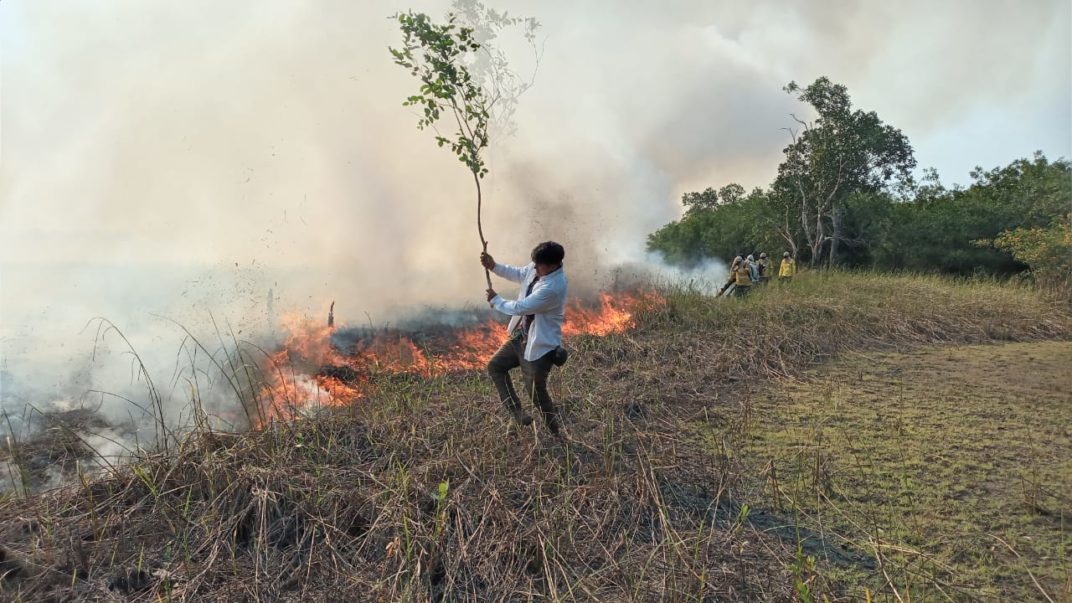
FIGHTING FLAMES IN THE XINGU INDIGENOUS TERRITORY PHOTO: TAKUMÃ KUIKURO.
Lots of work ahead
It seems that volunteer brigades spread across Brazil will still have lots of work ahead and will need to be strengthened. This is, for example, the case of BRAL, a consolidated and experienced brigade that still faces some difficulties. According to Diego Serrano, “the next step for the brigade is to have its own headquarters in Lençóis, as we still have to pay rent. To have our own car to transport brigade members would also be important, as we still rely on cars borrowed from volunteers for our transportation when fires break out.”
“Despite the best efforts by the Casa Fund in mobilizing timely resources to avoid forest fires, and despite having achieved positive results as descried above, we still arrive too late in many territories,” says Maria Amalia Souza, Casa Fund’s co-founder. “Fortunately, our great effort managed to sensitize very special partners. However, we know that next year we will need to initiate these grants much earlier, so we are capable, as a society, to stop those fires before more tragedies take place. With these beautiful and courageous stories, we hope to sensitize more people and more funders who care about our rich and important biomes. This was only the first year of grants focused on community brigades. We hope that soon other partners will join us to defend this cause and new brigades will be created and properly equipped across all Brazilian biomes. There is no way of preventing these fires from spreading other than the courageous and indispensable work of local populations and the volunteer brigade members who, despite all dangers, dedicate their lives to protecting our natural treasures.”
